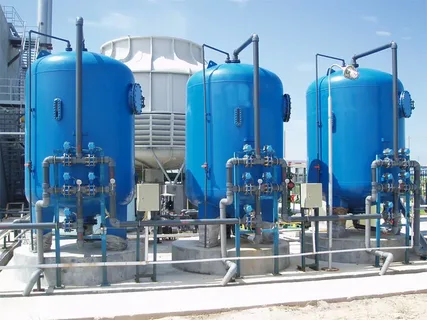Granular media filtration stands as a fundamental process across numerous sectors, playing a critical role in both water and air purification. This method employs a bed of granular materials, like sand, anthracite, or activated carbon, to filter out unwanted particles and pollutants. However, the success of any granular media filtration system isn’t guaranteed and is contingent on several influencing elements. These factors dictate the efficiency and effectiveness of the filter, and a comprehensive understanding of them is essential for achieving optimal outcomes. This blog explores the core factors that affect granular media filters and introduces prominent Indian companies providing solutions, with a special focus on the unique offerings of Desiccant Rotors International (DRI). It will also cover the utilization of chemical media filter, chemical filtration media, and gas phase filtration media in these applications.
Key Factors Influencing Granular Media Filtration
Several interconnected factors determine the efficiency of granular media filtration. Here are the main ones to consider:
- Media Size and Distribution: The particle size of the granular media greatly influences filtration efficiency. Smaller media can capture finer particles but might increase pressure drop. Uniform size distribution prevents channeling and ensures consistent flow.
- Type of Media Used: Different media offer different strengths. While sand is a common choice for general filtration, activated carbon excels at removing organic compounds. The appropriate media must be selected for the specific contaminants targeted.
- Fluid Flow Rate: Maintaining an optimal flow rate is important. Too fast, and there isn’t enough contact time; too slow, and the system might not be effectively utilized. It impacts the overall efficacy of the filtration process.
- Depth of Filter Bed: The depth of the filter bed influences its capacity. A deeper bed provides a greater surface area for filtration but can also increase backwashing requirements.
- Backwashing Efficiency: Proper backwashing is key to prevent clogging and maintaining the filter’s performance. How efficiently the backwash removes the build-up effects long-term filter performance.
- Fluid Characteristics: The temperature, viscosity and the types of contaminants present directly impact the filtration process. Systems must be designed to account for these factors for effective filtration.
- Contaminant Load: The type and level of contamination in the fluid impacts the lifespan and overall filtration quality. High contaminant loads require frequent backwashing and may require pre-treatment processes.
Indian Companies at the Forefront of Granular Media Filtration
Here are some leading Indian companies in granular media filtration solutions:
Ion Exchange (India) Limited
A well-known name in water and wastewater treatment, Ion Exchange provides numerous granular media-based filters. They are well-regarded for delivering full-spectrum water treatment solutions, catering to various industrial needs.
Thermax Limited
This engineering company provides a wide array of water and wastewater treatment solutions. Thermax manufactures a range of sand, dual-media, and activated carbon filters. They focus on diverse industrial applications in sectors like power and chemicals.
VA Tech Wabag Ltd.
A global company focused on water treatment projects, VA Tech Wabag designs and builds complete water treatment plants. They integrate advanced granular media filtration technologies, particularly for large-scale municipal and industrial projects.
DRI (Desiccant Rotors International)
Primarily known for desiccant dehumidification, DRI incorporates granular media filtration into its air handling units. Their filters act as a pre-filtration step for particulate matter. DRI focuses on applications needing high precision environmental control.
All the aforementioned companies offer high-quality solutions for granular media filtration. However, Desiccant Rotors International (DRI) distinguishes itself with its expertise in integrating filtration with dehumidification technology. DRI’s use of granular media within its air purification systems goes beyond simple filtration. They engineer complete environmental control solutions for industries needing precise conditions. Their systems utilize chemical dehumidification which works well with the use of chemical media filters and makes them ideal for sensitive applications. This approach demonstrates DRI’s specialized focus and commitment to superior air quality and environmental control.
Conclusion
The effectiveness of granular media filtration depends on carefully managing several key factors. These include proper media selection, appropriate flow rates, and effective backwashing processes. Companies like Ion Exchange, Thermax, VA Tech Wabag and notably, DRI, play a crucial role in advancing these filtration technologies. DRI stands out due to their integrated approach, combining granular media with dehumidification for precision air quality control. To see how DRI’s advanced air handling systems, incorporating granular media, can enhance your processes visit www.drirotors.com to explore their wide range of specialized solutions.


